Keyboard layout¶
A keyboard layout refers to the arrangement of keys on a keyboard and determines how characters, symbols, and function keys are accessed. The most common keyboard layouts include QWERTY, AZERTY, and Dvorak, each designed to optimize typing efficiency and comfort for different languages and user preferences. This guide describes how to configure your keyboard layout.
Open the GNOME Control Center and click Region & Language to begin.
Add a layout¶
Within Region & Language, click the + button.

Select a keyboard layout to add.
Tip
EXAMPLE: Select the English Dvorak keyboard layout.
Click here to expand
The keyboard layout we wish to add uses the English language, which is already shown. Click English.
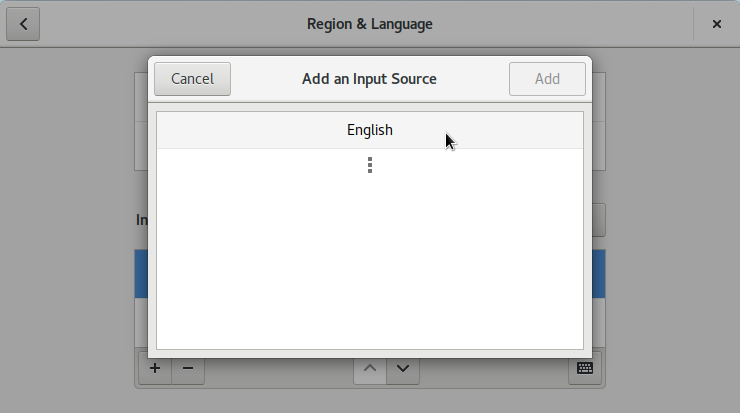
Now that the language is shown, various keyboard layouts will be shown that use that language. Click English (Dvorak).

Tip
EXAMPLE: Select the Serbian keyboard layout.
Click here to expand
Click the kebab (⁝) button to add keyboard layouts not shown by default.

Click Other. Scroll for additional languages or type the desired language into the search bar.
Click a language to select it.

Once a keyboard layout is selected, click Add to add it.

Click Add. The new keyboard layout is added to the list:
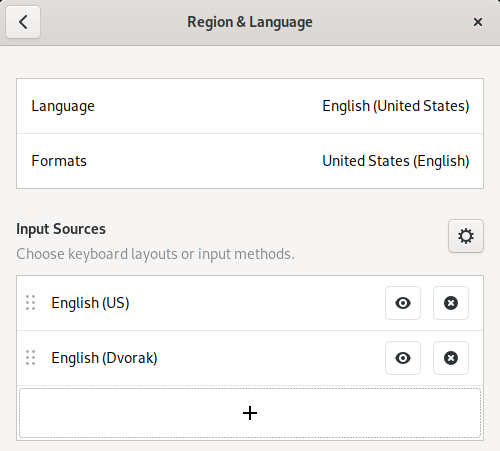
Organize layouts¶
The position in which a keyboard layout appears in the Input Sources list determines the order in which the kayouts are shown within the dropdown menu of active layouts. To change the organization of keyboard layouts:
Within Region & Language, click and drag a kayboard layout up or down to set its position in the list.
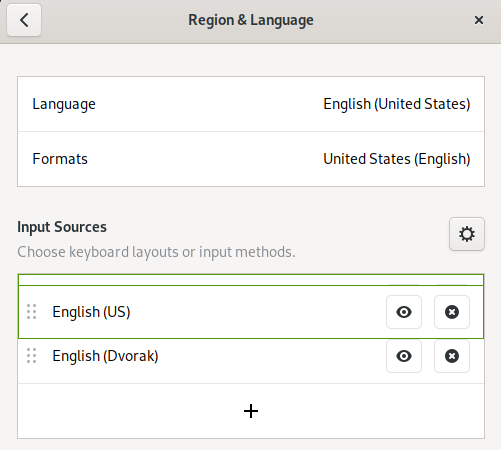
Set the active layout¶
Once multiple keyboard layouts have been added to the user session, the active keyboard layout can now be quicky changed within the GNOME desktop. The order in which these keyboard layouts are displayed are determined here.
Press the layout button in the on the upper-right corner of the screen.
Select the language to set as active.
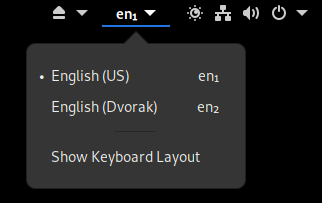
Remove a layout¶
Remove a layout by clicking the X button next to the corresponding keyboard layout to be removed:

Click the Options (gear) button for advanced options:

Additional layouts¶
Enable any additional keyboard layouts in the GNOME Tweaks tool.
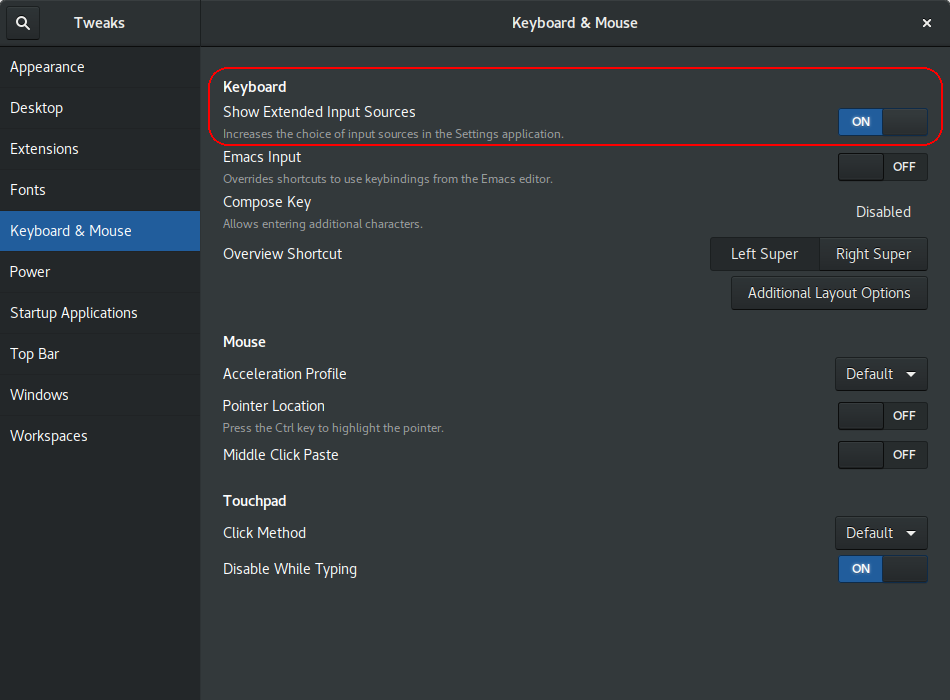
Log out and log back in for the setting to take effect.
Open Region & Language settings to see additional layouts. For example, you can click on English to list additional language variants that match the US physical keyboard layout:
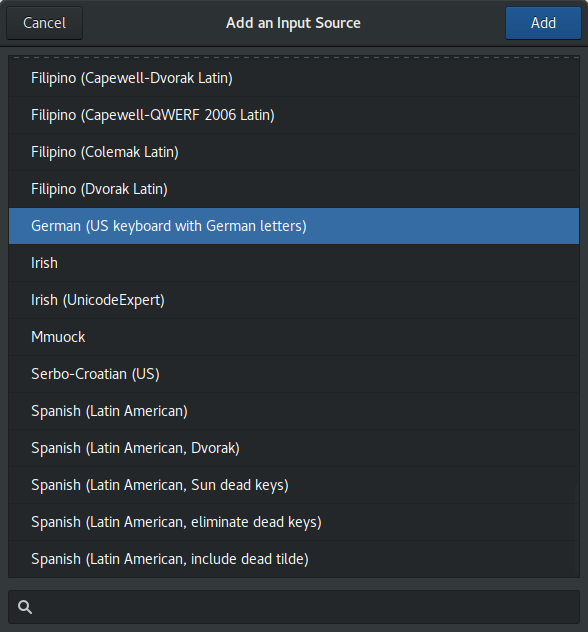
Troubleshooting¶
Language missing in the list¶
Open the file
/etc/locale.genfor writing.Uncomment (remove leading
#) your language code. For example, change#de_DE.UTF-8 UTF-8tode_DE.UTF-8 UTF-8.Execute the following command in a terminal:
sudo locale-gen
Your language (in this case German-Germany) should appear on the list.